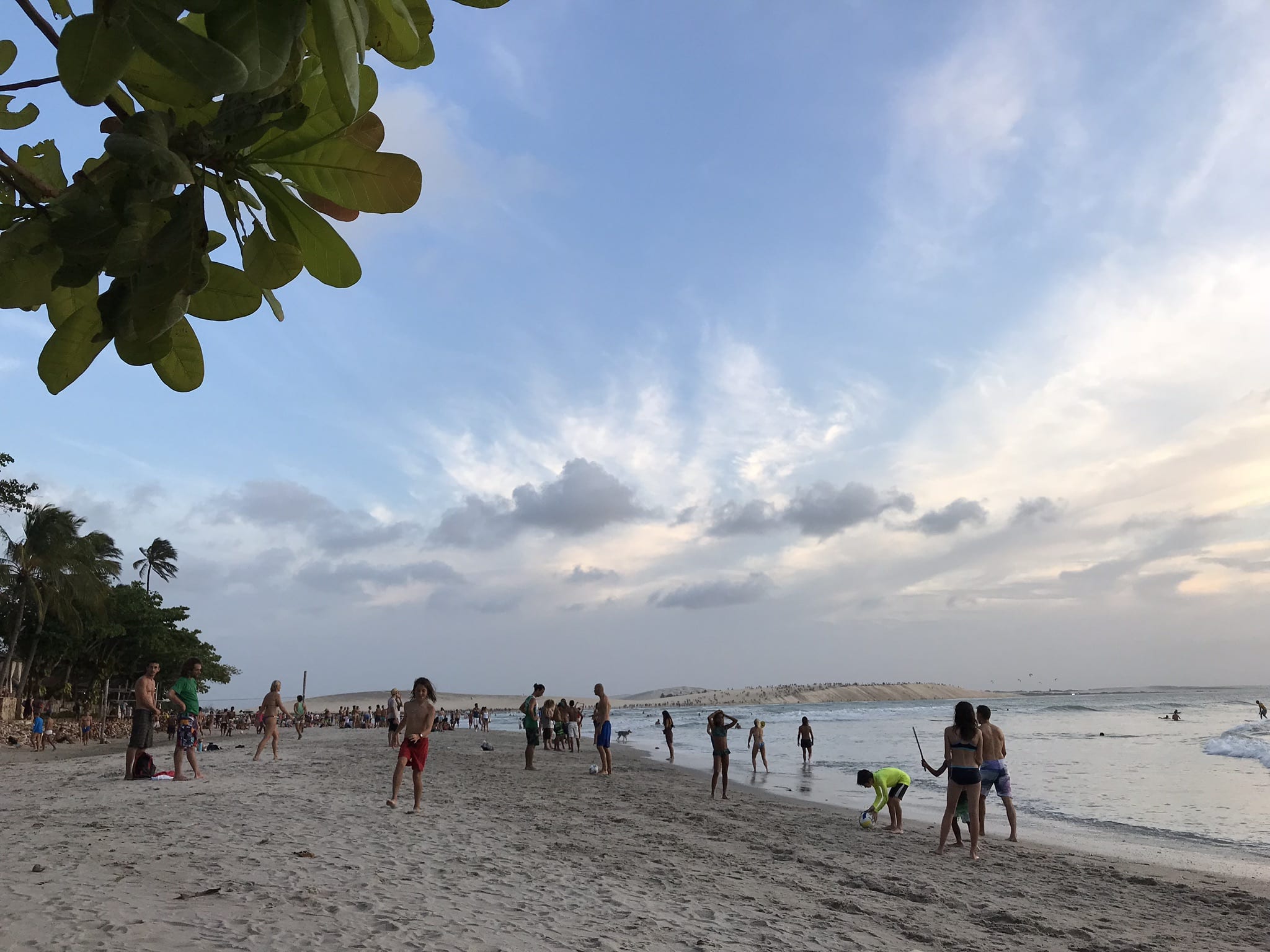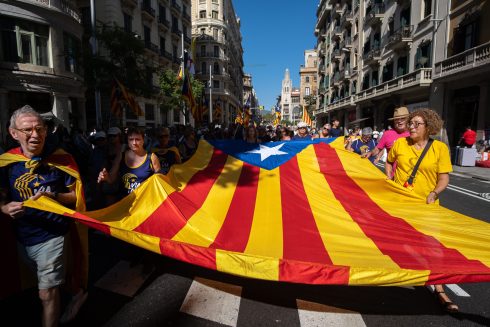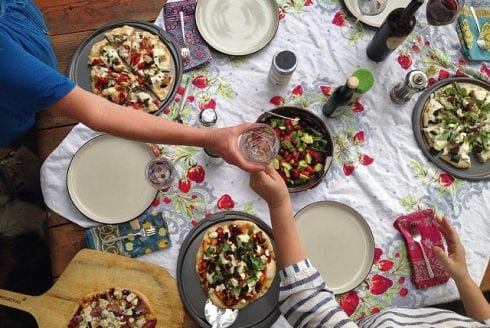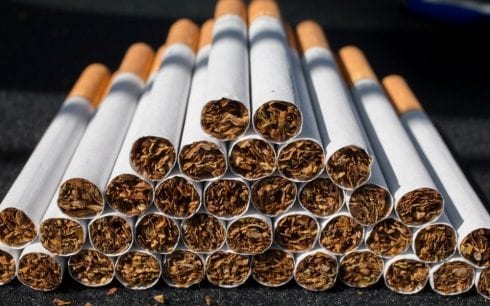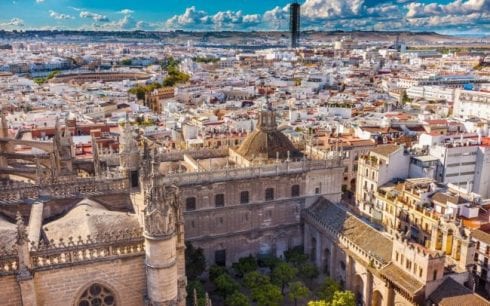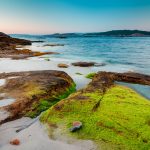IT’S a Brazilian beach version of the Grand National, except these are fishing boats, not horses.
The teams start at the top of the sands and bit by bit edge their way down to the shoreline using an ancient roll-and-shunt method with two large rolling pins.
It takes about half an hour and the race ebbs and flows, as each wooden ‘jangada’ temporarily nudges ahead by a nose or two.

Finally, the boats are disgorged into the briny and off they go in search of fish.
Very much part of the colour of the perfect beach holiday in northern Brazil, the boats are said to date back to the ancient Greeks, and legend has it that Ulysses sailed in a jangada in The Odyssey.
These fishing communities are the lifeblood of Ceara, Brazil’s poorest region, suffering from aching poverty particularly in its dry interior, not to mention its capital Fortaleza, which is largely a place to avoid, according to most guide books.
But either side of Fortaleza you will find hundreds of miles of amazing beaches, largely virgin and little exploited by modern western tourism.
Apart from a steady stream of surfers and kitesurfers, most visitors to Brazil head further south, taking in trips to Rio de Janeiro and its nearby resorts.
More’s the pity, the region boasting 3000 hours of sun a year, temperatures between 25 and 30 degrees and a constant breeze to keep you cool.
The real joy of Ceara though is how easy it is to get to.
While most parts of South America take half a day to get to, this jutting out north-western corner of the continent is just over seven hours away by air. In other words, perfectly doable with kids.
Going via Lisbon with TAP, we arrived early evening in Fortaleza and were comfortably installed in our first abode – a charming beachside villa in the village of Taiba – by 8.30pm local time.

Being a badger’s tail from the equator it was still around 25 degrees, but incredibly mosquitoes and other annoyances were remarkably thin on the ground. This supposedly changes during the rainy season from January to March so be warned.
Our home for the Christmas week, we woke up to the perfect set of gently breaking ‘rights’ and raced kdownstairs to rent boards from the local surf pro, Toniu, who charged us just 300 reales (about 80 euros) for the week and threw in daily lessons for the kids, Alfie, 9, and Maia, 12.
We were soon out carving up the wonderful beach break, forgetting that 10am in Brazil is practically midday heat and the mercury was already hitting 30.
After a two-hour session we retired to the shade and spent the rest of the day playing cards and reading, rehydrating with the best natural drink on the planet…coconut juice.
Delicious as it is healthy, when served cold a coconut is almost a substitute for a cold sherry or beer (and certainly more acceptable at morning time).
After a week of relaxing, reading and surfing, we were ready for the next part of our trip… and headed 30 minutes north for, um, another four days of relaxing, reading and surfing, this time in the better known resort of Paracuru.
Another famous wave (with a legendary kitesurf lagoon just up the coast), the big surprise, yet again, was how few Europeans we saw.
Our Polish hotel owner summed the place up as a ‘sleeping giant’ in tourist terms and explained how it is all set to change over the next few years with a huge planned refurbishment of Fortaleza airport (it was recently bought by German conglomerate Fraport AG) and a string of new direct flights coming in from Europe.
Paracuru was distinctly younger and hipper than Taiba and had a real party vibe about it.
It was truly rocking for New Year, but the days either side saw groups of teenagers partying on the beach, playing volleyball and football until dusk.
A ribbon of beach cafes place their tables literally on the sand and there were some lovely walks in either direction, past dozens of coves in one direction and the other, the largest sand dunes in the world!
The trajectory of our holiday was mostly a gentle 300km meander up the coast to the pot of gold, known as Jericoacoara, one of south America’s hippest resort.

MONKEYS
But, before our final push north west, we decided to take a trip inland to visit some monkeys.
The three-hour drive to Ubajara, Brazil’s smallest national park, took us through stunning scenery and some of Brazil’s harshest land, due to low rainfall and poor soils.
There is remarkably little written about the Ubajara area, which once featured in the Lonely Planet, but somehow got airbrushed out a few years ago, for inexplicable reasons.
We stayed in a hut in the heart of the jungle close to the park and woke to a family of monkeys swinging outside, looking decidedly envious of the breakfast that had been brought to our door.
The park itself was a letdown. It turned out you could only visit in set groups at three different times of the morning and this, in our case, meant nearly 20 people, the vast majority in flip flops, and almost certainly never having visited a park before. It was excruciating, to say the least.
Our next abode, the stunning Posada Sitio Ipe in the nearby village of Vicoso do Ceara, made up for it. While nobody spoke English, (none of the staff could in fact remember an English visitor) it was both laid back and a touch colonial, rather like the nearby town.
From here we were a short two hour drive north to Jericoacoara, the biggest surprise of our trip by far.
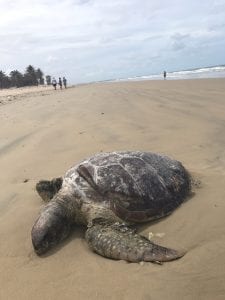
TUM AND JERI
Arriving in ‘Jeri’ is all part of the fun. For this pretty seaside village is entirely surrounded by sand dunes and being a national park, can only be reached by official vehicles.
It is just as well, as without such rules the place would be swamped, given the cult status it has garnered since being ‘officially discovered’ by the Washington Post in 1987… and being dubbed the ‘world’s best beach’ by the Lonely Planet in 2004.
The once sleepy spot, which only got electricity in 1998, is now an enchanting mesh of style and charm, a photographer’s dream full of colourful shops and restaurants and the sort of beautiful people you find in places like Ibiza or Tarifa.
Few places in the world have the wow factor like Jeri. And much of its charm lies in the fact it has maintained its sandy streets (there’s no tarmac), it has a strict rule on street-lighting, and also charges a pretty steep, five-dollar-a-day tourist tax (under 12s are free), which goes towards maintaining the local environment.
Not being easy to get to also helps, so the recent arrival of a local airport, with short connecting flights from Fortaleza, is of some concern.
Currently, getting there, involves dropping your car around 20kms away in the rather humdrum town of Jijoca and contracting a local 4×4. That is, unless, like many arrivals you come straight up the coast on an off-road adventure from Fortaleza which takes from three to four hours (we did that on the way back to the airport, more of which later).
What is so refreshing about Jeri is the huge mix of nationalities, the variety of places to eat (there’s plenty of sushi, Peruvian, Italian, etc etc) and the stylish places to stay.

It’s popular with the French, which always helps, and there is a real sense of activity here.
Everybody, it seems, is practicing one sport or another. There is surfing, kitesurfing, windsurfing, paddle boarding, surf canoeing, each discipline given rules on where to practice – not that everyone adheres to it.
Then there are some fabulous walks along the coast, and at the very least up the nearby massive dune to watch the sunset, which is said to be one of the best in Brazil.
We really got a sense of what a hip spot it was by simply visiting the rooftop terrace of our hotel, Hurricane Gardens, at dusk, where DJs, fire-eaters and dancers kept a very urbane Sao Paulo/Rio-style crowd bumping and grinding until around 10pm.
It was here that we met the only English tourists of the holiday. One, a fashion photographer based out of New York, another, an online publisher from London…and the last, a multi-millionaire marketing boss, who planned David Cameron’s first successful election campaign. It says it all.
All that was to remain was the journey back… and that turned out to be perhaps the best adventure of all.
This kicked off at 9am when knowlegeable Canadian expat Jeff Stone rolled up in a very robust-looking VW Amorok. In bundled all the bags, plus the kids and off we went down the beach en route for our 10pm flight home.
A fabulous day spent mostly charging down virgin beaches, crossing creeks and rivers in a variety of original craft, we saw plenty of nature, rare birds and ended up eating supper in an upmarket restaurant in Fortaleza, before Jeff dropped us at the airport in plenty of time. Contact Jeff at [email protected].
WHERE TO STAY
Hurricane Jeri and Hurricane Gardens (www.hotel-hurricane-jericoacoara.com) in Jericoacoara offer the same mix of style and comfort as the group’s three hotels in Tarifa. Wooden built with a riot of tropical planting, there are two excellent restaurants, a hip roof-top bar and beautiful gardens overlooking the sea. A concierge can organise a huge range of trips from the door, while there are yoga classes every morning in the hotel.
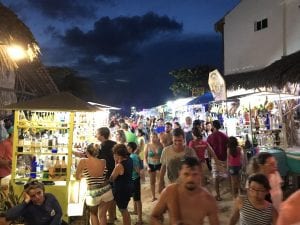
HOW TO GET THERE
TAP airline flies to various destinations in northern Brazil, via Lisbon, where under a new promotion you can lay over for up to three nights before taking the second leg.Visit www.flytap.com for the best offers. We took up the excellent option of staying a night in the Portuguese capital and did a bit of shopping and sightseeing en route.
FOOD AND DRINK
Brazil has a great variety of traditional foods and its style is a combination of key ingredients brought by different cultures that landed here. It all started with the colonisation by the Portuguese in the 16th century, while the Italians brought pasta, the Spanish empanadillas, the Arabs spiha and kibbeh and the Chinese and Japanese another range of dishes.
The country has a string of Michelin starred restaurants, but they are all sadly in Rio and Sao Paolo and outside of the big two, it is hard to get a grasp or where exactly one should eat.
Local knowledge and pot luck seem to be the rules of the road.
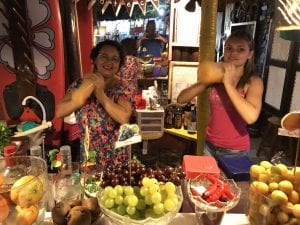
Drinks-wise, we bought half a dozen bottles of French and Portuguese plonk at the airport. But we hardly needed to bother, as the local supermarket had a surprisingly decent selection of whites and reds from Chile and Argentina (Brazil being generally one to avoid on the wine front).
And then of course there is Cachaça (pronounced Ca-shasa) the amazing local spirit that goes into the famous Brazilian cocktail Caipirinhas, alongside sugar, limes and ice.

